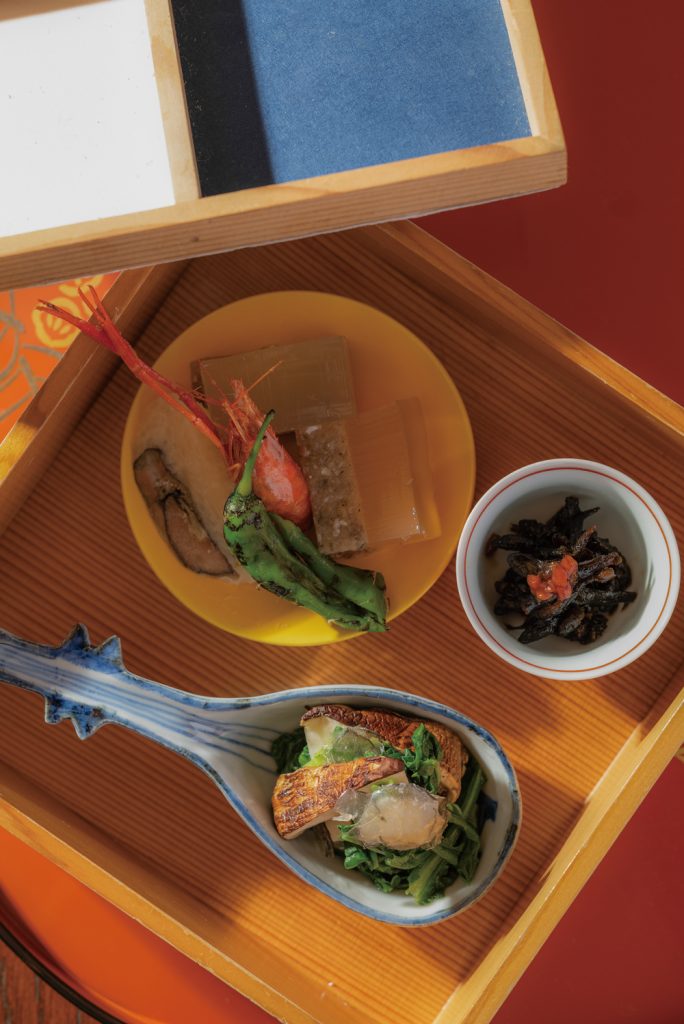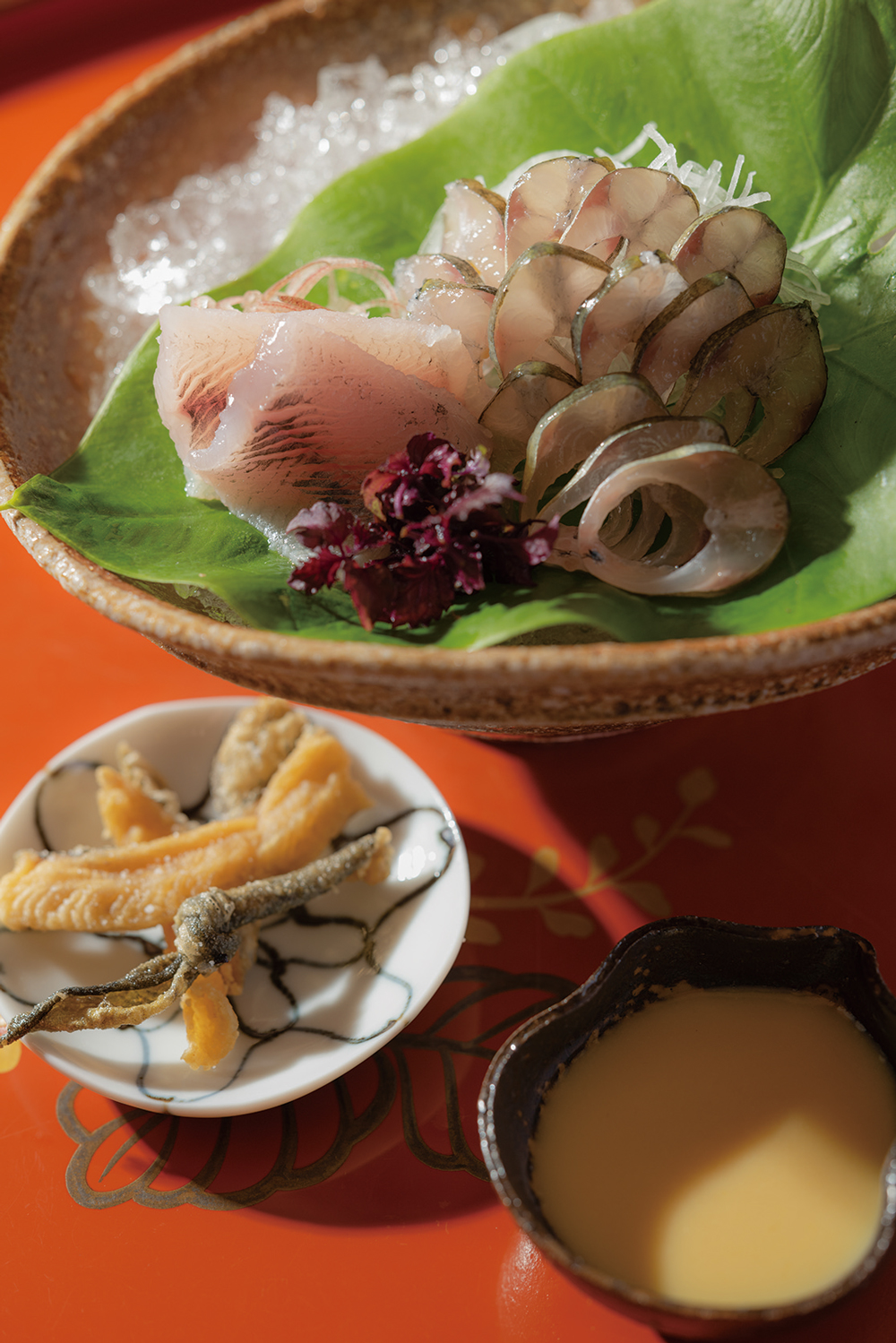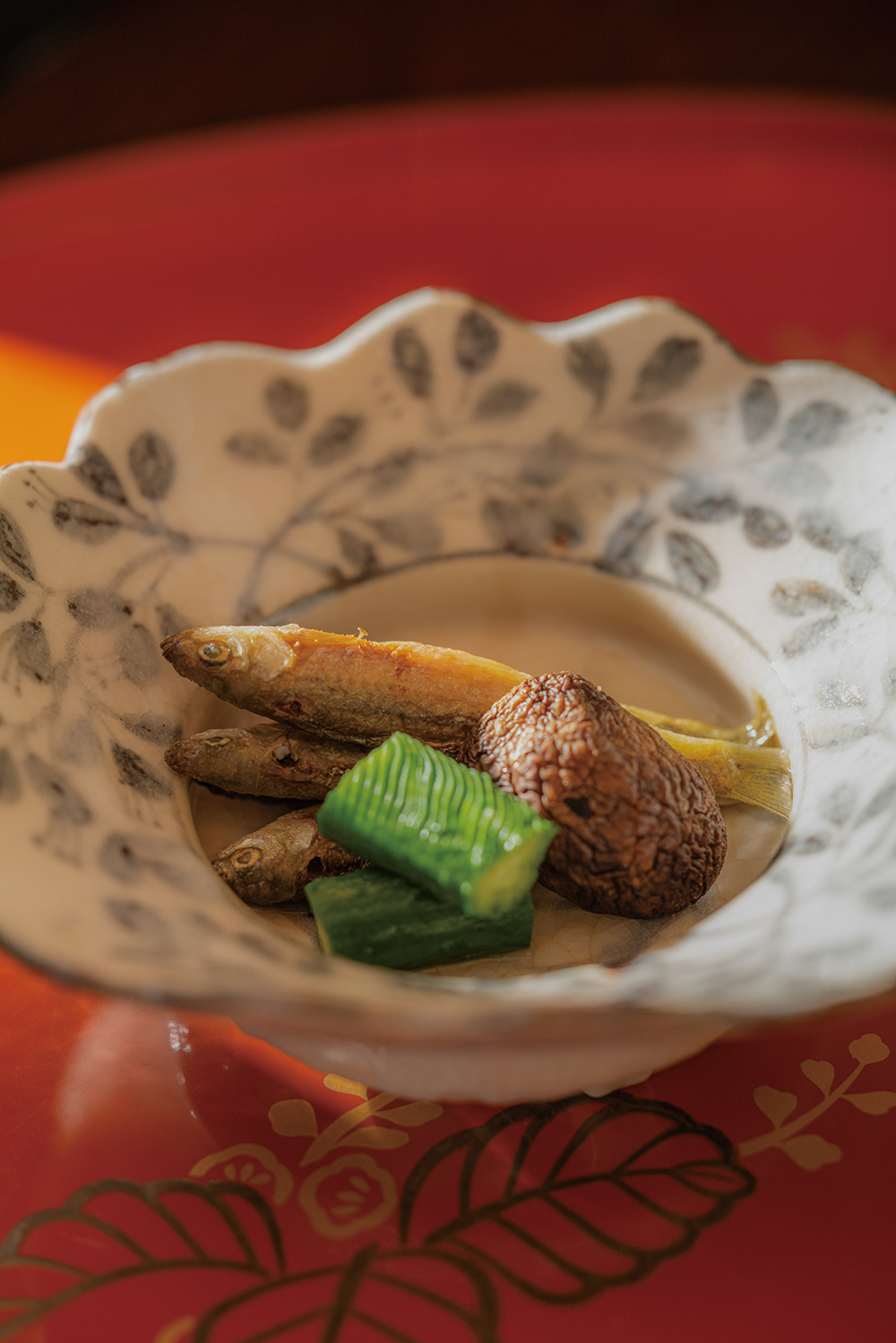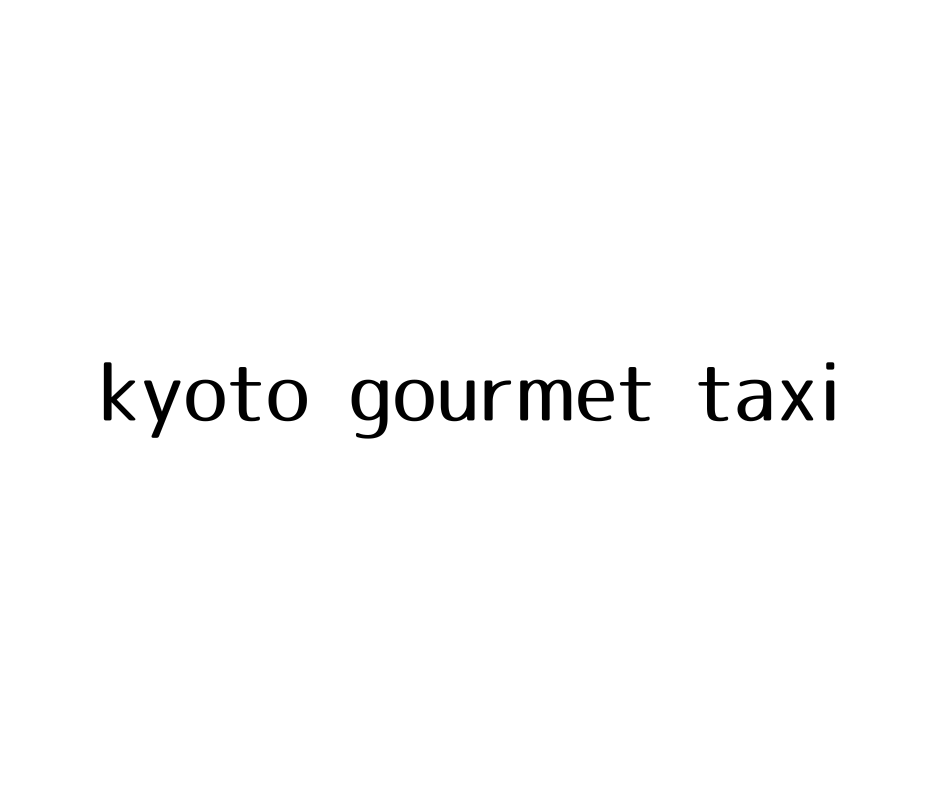
Zero Food Waste Kyo-Kaiseki
Approaching Zero-Food-Waste Kyoto Cuisine
Inspired to explore our future through Kyoto’s cherished culinary culture, TSUMUGINO KYOTO conceived “Zero-Food-Waste Kyo-Kaiseki” that doesn’t create any waste through cooking. [Kyo-kaiseki: “Kyo” is short for Kyoto and “kaiseki” refers to traditional high-class Japanese cuisine] We asked Takeshigero: Kyo-Kaiseki Minokichi Main Restaurant to create a full-course Kyoto cuisine which produces no waste, while allowing us to enjoy whole ingredients’ flavors and nutrients.

The katsuo bonito flakes and kombu kelp after taking broth, and candied sweet fish heads are rolled inside daikon radish to be simmered together. A dish called “Bishu-maki” which has existed in Kyoto since the seventeenth century.

Yoji Satake, Takeshigero: Kyo-Kaiseki Minokichi Main Restaurant
The Executive culinary director and chef of Kyo-Kaiseki Minokichi. He trained at Nanzenji Hyotei for three years after graduating from university, before starting to work in Takeshigero: Kyo-Kaiseki Minokichi Main Restaurant’s kitchen. He has been teaching cooking on broadcasted cooking programs, as well as in classes organized by local governments and companies. He has also instructed classes for younger students as part of dietary education.
Is zero-food-waste difficult?
– This time, we asked you to prepare dishes without creating any food waste at all. Was there anything that you found challenging about that?
Actually, it’s not so difficult. I could do it anytime. Our restaurant specializes in freshwater fish, and we made Kyo-kaiseki style dishes of our restaurant’s style, but using the ingredients to their last bits, is not anything difficult to do for a well-trained cook. Of course, there are also things that could be done at home, too.
– Then, why do you think it is, that a lot of dishes don’t use every single piece of the ingredients?
There are some, but in accordance with our clients’ expectations, we don’t usually serve the kind of dishes that take a lot of extra effort to change the parts that are hard to eat so they are edible, especially not for the kind of fancy dishes that are served for special occasions. In the old days, when food wasn’t abundant like now, everyone used to make those extra efforts to make it edible. Some of those dishes still survive. For example, the pike eel is especially delicious, so [although it has bones that can’t be taken out] the special technique to slice the bones has been passed down to today.
I think it’s a good thing, if the sense of value changes and everyone starts to place value on “not producing waste.” I think zero-waste cooking like this is still rare, so I’m happy if we would be able to encourage change through proposing this style of dining to our guests and enjoying ourselves while making it.
– Which dish in today’s menu do you think might be is easy to adapt to in home cooking?
Out of this menu, I think the easiest would be the “Fig compote.” We cooked the fig skin which we usually discard and put it in the sauce of the compote. The texture and firmness are different between the skin and the fruit, so we adjusted the texture by cooking them separately. Many fruits and vegetables have rich nutrition in their skin. In other words, the vital energy the plants hold to survive in nature is in there, so it seems natural that we eat them whole to nourish our bodies.
Also, we put used tea leaves in the sweet jelly using azuki beans called yokan. If smooth texture is a priority, then you could use food processing machines to make it extra fine. Perhaps many people don’t make yokan at home, but I think that different parts of food, like the skin, roots, cores and stems, or ingredients that have been used to only extract its essence like tea leaves, have the potential to have the way they are cooked changed.
In that sense, I was pleased to feel reassured about the virtue of freshwater fish cooking this time. From sweet fish, minnows to river shrimp, most are edible from head to tail, so they don’t require new devices to achieve zero waste. Not to mention that being able to eat something whole means taking in all its nutrition.

Further thoughts on how to prevent ingredients getting wasted
– Could you tell us more about ways to save food from being wasted? What ingredients were especially difficult?
Generally speaking, it’s the hard ones. This time, it was quite challenging to try to make every part of the carp edible including its head and bones. Even I had never tried that before, but once I started, I found the solution along the way. For the “Carp sake lees soup,” I deep fried and crushed the head and bones into fine pieces, and used it as a topping along with the burdock root strips. I also fried the scales, marinated it and used it in the “Jellied carp” leaving nothing behind.
The other difficult part was the eel head. We are accustomed to cooking freshwater fish including eel, so we cooked it for four hours and made it nice and soft, but this might require some extra skill. Cooking it with a pressure cooker would make it too soft and loose its texture, on the other hand, just boiling it down wouldn’t make it soft enough.
– What do you think the future of hospitality is going to look like?
Well, for example, when I was trying to cook the extra hard parts of food, at first, I thought we could use grinders or liquid nitrogen. In reality, it’s easier to change the selection of the ingredients. When zero-waste cooking becomes more popular, I think new cooking utensils and technologies will follow. I think it’s great for our health if we could eat food whole and deliciously because that would allow us to take in plenty of well-balanced minerals.
Nevertheless, I think it’s important to not focus only on removing everything that is wasteful or useless. For example, I might decorate a branch of bush clover flowers that bloom in our garden [in the room or on the table]. I could tell our guests, “They are autumn flowers,” and maybe they will like it and want to take it home with them. It would be nourishing to our minds to remind ourselves how both the flowers and the food are gifts from the Earth. If it is nourishing to our minds and souls, then I don’t think that should be called waste.
This time we focused on not creating food waste, but I also realize that there are many more approaches to take, like the packaging of the food, or adjusting the portions of serving sizes so our guests can eat it all. That said, what I cherish the most is the spirit of hospitality. As professional cooks, we have always devoted are skills to take an extra step further for our guests. Now, I feel that it is not that spirit itself but rather the way that we express it that might encompass a new direction.
Overview: Zero-Food-Waste Kyo-Kaiseki
A full-course Kyoto cuisine meal which begins with a brilliant appetizer featuring the season, followed by soup, sashimi, grilled fish and more.
1. Sakizuke – appetizer
River shrimp shuto (salted and fermented)
River shrimp – edible from head to tail
Fermented sweet fish narezushi (fermented sushi)
Fushimi chili peppers
Jellied carp – with deep-fried and crushed bones inside
Gori – freshwater goby
Matsutake mushrooms and boiled chrysanthemum greens with tasty carp scales

2. Wan - soup
Carp sake lees soup
with
Fried and simmered carp head and bones with burdock root and myoga ginger, topped with finely crushed bones

3. Mukozuke – sashimi
Sweet fish segoshi (sliced in rings)
Char arai (tightened in ice water)
with
Crispy char bones and skin

4. Yakimono – Grilled fish
Grilled eel
with
Eel bones and head simmered sweet

5. Takiawase – Simmered fish
Sweet fish with roe simmered sweet
Bishumaki – bonito flakes, kombu kelp and daikon radish
with
Leeks
Carrot strings

6.Shiizakana – Marinated fish
Marinated minnow
with
Shiitake mushroom
Flowering cucumber
Tosa vinegar

7. Gohan – rice
Eel grilled with sweet soy sauce flavor and vegetables in rice – including cores
and hulls of vegetables
with
Red miso soup

8. Kashi – Dessert
Fig Compote
Dried fig sauce – cooked with fig peels
Tea leaves yokan – jelly with azuki beans and used tea leaves

Photos: Nakao Photo Office Text: Hiroyuki Kawai













